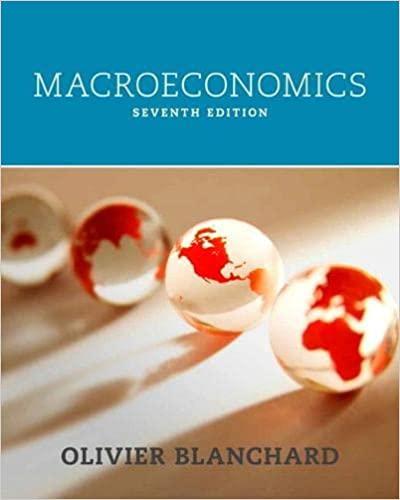The two paths to the medium-run equilibrium explored in this chapter make two different assumptions about the
Question:
The two paths to the medium-run equilibrium explored in this chapter make two different assumptions about the formation of the level of expected inflation. One path assumes the level of expected inflation equals lagged inflation. The level of expected inflation changes over time. The other path assumes the level of expected inflation is anchored to a specific value and never changes. Begin in medium-run equilibrium where actual and expected inflation equals \(2 \%\) in period \(t\).
a. Suppose there is an increase in consumer confidence in period \(t+1\). How does the IS curve shift? Assume that the central bank does not change the real policy rate. How will the short-run equilibrium in period \(t+1\) compare to the equilibrium in period \(t\) ?
b. Consider the period \(t+2\) equilibrium under the assumption that \(\pi_{t+2}^{e}=\pi_{t+1}\). If the central bank leaves the real policy rate unchanged, how does actual inflation in period \(t+2\) compare to inflation in period \(t+1\) ? How must the central bank change the nominal policy rate to keep the real policy rate unchanged? Continue to period \(t+3\). Making the same assumption about the level of expected inflation and the real policy rate, how does actual inflation in period \(t+3\) compare to inflation in period \(t+2\).
c. Consider the period \(t+2\) equilibrium making the assumption that \(\pi_{t+2}^{e}=\bar{\pi}\). If the central bank leaves the real policy rate unchanged, how does actual inflation in period \(t+2\) compare to inflation in period \(t+1\) ? How must the central bank change the nominal policy rate to keep the real policy rate unchanged? Continue to period \(t+3\). Making the same assumption about the level of expected inflation and the real policy rate, how does actual inflation in period \(t+3\) compare to inflation in period \(t+2\) ?
d. Compare the inflation and output outcomes in part b to that in part \(\mathrm{c}\).
e. Which scenario, part b or part \(c\), do you think is more realistic. Discuss.
f. Suppose in period \(t+4\), the central bank decides to raise the real policy rate high enough to return the economy immediately to potential output and to the period \(t\) rate of inflation. Explain the difference between central bank policies using the two assumptions about expected inflation in part \(b\) and part \(c\).
Step by Step Answer:






